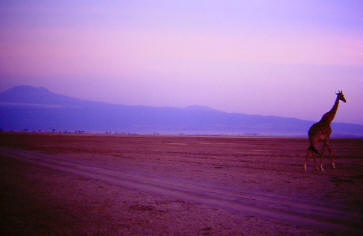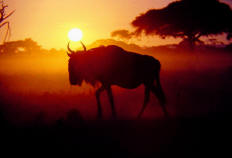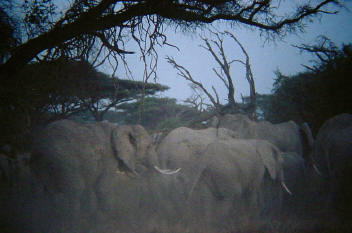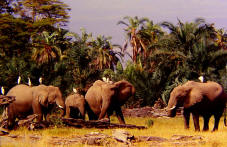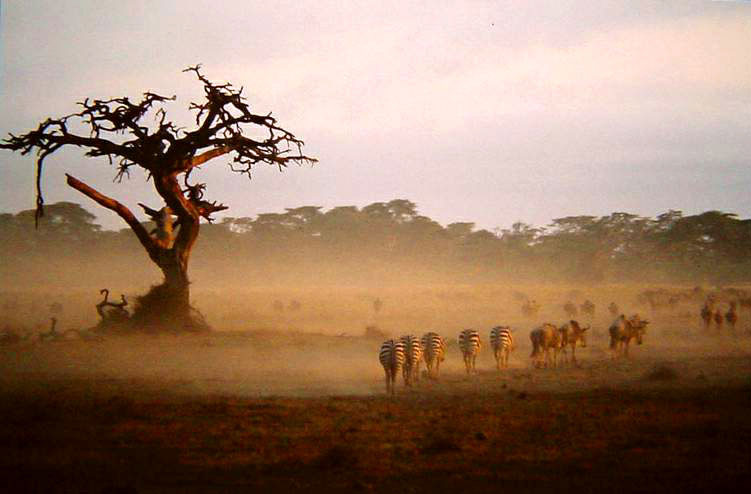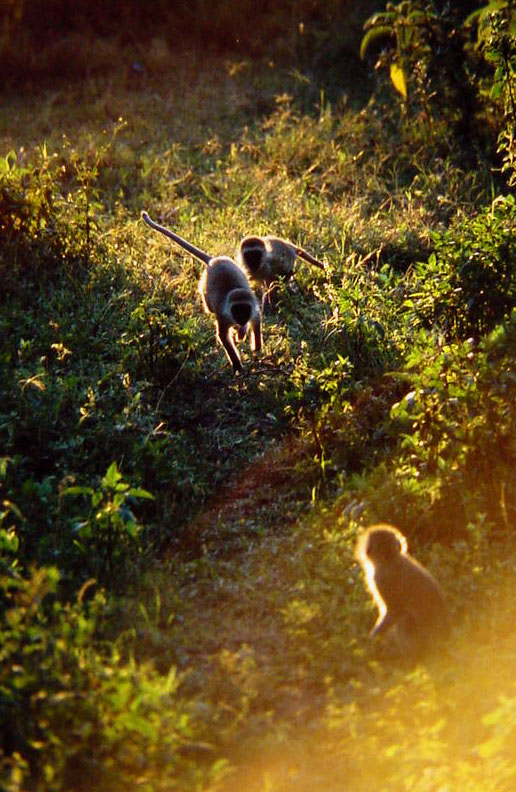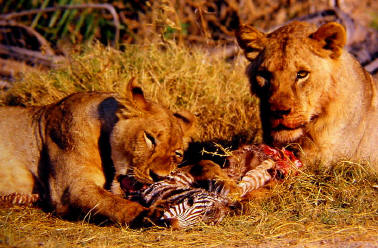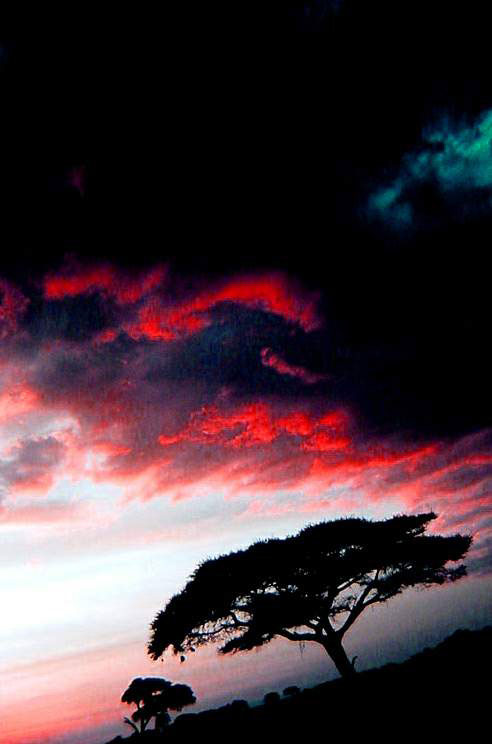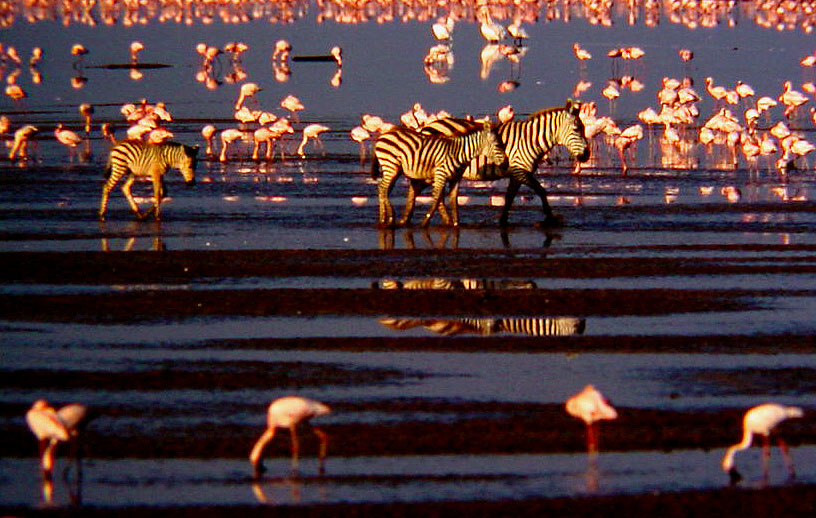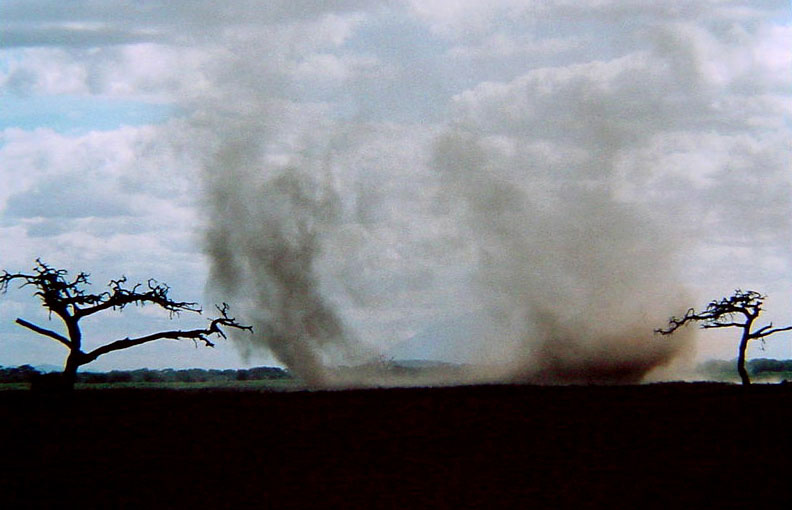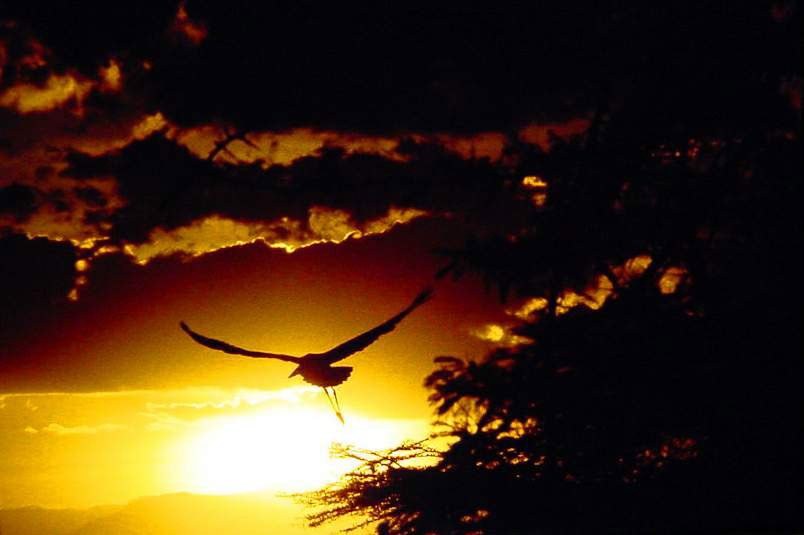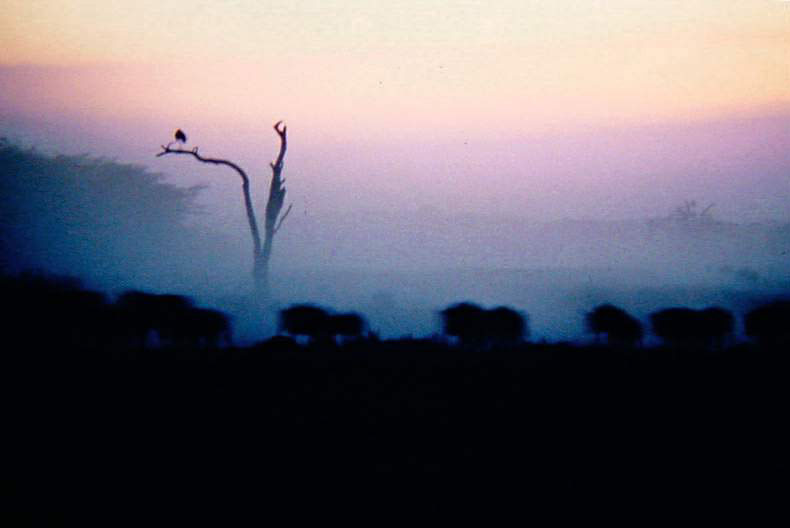|
AMBOSELI: A LAND OF EXTREMES By Tina Wright The first time I cast eyes upon her scape I knew in my mind she would haunt me always. The first time I set foot upon her soil I knew in my soul it would be forever. I had, ever since early childhood, felt a burning desire to travel to Africa - to unlock the mysteries of the "Dark Continent" for myself. That chance finally arrived during my twenty-seventh year, and with it my destiny awaited me in the shadow of one of East Africa's great giants! Weighted down with more camera gear than essentials, I stepped off a small twin-engine plane onto a tiny and rather rudimentary tarmac in the middle of southern Kenya's wilds. In the clear early-morning air I breathed the scent of wildlife in the silent wafts of air that blew past. In front of me loomed the awesome form of a 19,342-foot equatorial snow-capped odyssey known as Mount Kilimanjaro, and sprawled at its roots was Amboseli - a land of extremes! Since that fateful encounter I have rendezvoused with Amboseli on many an occasion and never once has she let me down - not photographically or spiritually. I have traveled extensively throughout Kenya and from a photographic standpoint Amboseli ranks at the top of the list. One of the big attractions in this national park is its huge herds of elephants. Research teams have used this location for decades as a base to study these magnificent giants, and in doing so have created a safe haven for them to roam. Because of this the pachyderms are not shy at all, and often will pass within ten feet of a vehicle. I enjoy shooting them at dusk when the last light of day has turned to melancholy shades of blue. The resulting images are often moody and hauntingly beautiful.
Elephants are not the only draw however. Wildebeests, zebras, and gazelles are prolific, as are giraffes, buffalos, baboons, jackals, and hyenas. Lions also reside here in strong numbers and are readily spotted. Though these kings of the wild are more famous in the Masai Mara, I have found that a number of my best lion shots have come from Amboseli .
One of those shots was taken on my second trip to Kenya. It was our first day and the early morning light was warm and pleasing to the eye. We had hardly begun our search when we rounded the corner of a palm grove thicket. We could hardly believe our eyes! Just off the track, no more than thirty feet from us, lay two sub-adult males. In their grip was a zebra foul recently brought down, its young lifeless eyes staring out at us. I grabbed a homemade beanbag that I use for support, threw it over the railing of my open roof hatch, and began firing away. Frame after frame, roll after roll, I viewed the entire experience through the 500mm lens of my camera. I knew I would see nothing better on this morning and was perfectly content to wait out the meal.
Not all photo opportunities in Amboseli are quite as sensationalized as this, but the more common ones are no less impressive. Though permanent swamps, lush oasis, and majestic mountains make up some of the park's landscape, most of its area is comprised of barren desert. Through much of the year winds carry swirling vortexes of dirt known as dust devils across the horizon, some measuring hundreds of feet in height and width. These "devils" make unique photographic subjects. I often try to include a tree or an animal to lend scale to its size.
It is in fact, this dry, dusty environment that has ultimately bewitched and captured my soul. There is a phenomenon in Amboseli that I have yet to witness anywhere else. It occurs with every dawn and every dusk that passes. I always stay at the Amboseli Serena Lodge when I visit. Just outside the lodge's gates the flat terrain is littered with old tree skeletons that have yet to fall. To the south, Mount Kilimanjaro watches. In the cool of the pre-dawn morning, camera ready, I sit and wait. In the distance I hear grunts and cries. From the slopes of Kilimanjaro they flow, a long procession of wildebeests and zebras. As they approach, the air begins to fill with a layer of misty dust. With every step of their hooves the layer thickens. In front of me the sun is beginning to rise and as it does so the choked air becomes illuminated in deep shades of amber and crimson. The moment has arrived! As the animals pass between my lens and the sun, they become beautiful black silhouettes against a surreal backdrop of intertwined light and soil. I take my exposure from a spot reading off the brightest area of the sky outside of the sun and begin shooting. I switch from lens to lens - my 500mm for close ups, my 200mm for a few animals, my 50mm for a landscape with animals passing through. I toy with shutter speeds - fast ones to freeze the animals' movements and capture a moment in time, slow ones to blur their movements and create a timeless, ethereal quality. With the productive shoot over I am able to relax and reflect on the majesty of nature I have just borne witness to - and I am often overwhelmed. Sad to see it over, I know that evening will bring with it another chance, as the same herds again pass by on their journey back to the mountain. This truly is a land of extremes - and in this dry, dusty environment, nothing is as it seems - where sunsets and sunrises become hypnotically surreal and around every corner something new emerges. Inhospitable desert gives way to lush green oasis, oasis to thick forest, forest to dead, craggy trees - and throughout, life flourishes - playing out its daily drama under the watchful eye of Amboseliís guardian mountain. The photographs made here stand on their own, but the emotions felt cannot be justly placed into words - one must simply experience it for themselves Tina Wright is a diverse photographer whose talents bridge a wide range of applications. From photojournalism to fashion to fine art, she enjoys them all. Her true passion though, lies in the fields of natural history and travel photography. In this she has found a purpose - to document the wildlife, natural habitats, and indigenous peoples of the places she encounters, in the pursuit of drawing attention to their need for preservation through her though-provoking and often artistic imagery. She began photography in her early teens as a hobby and an extension to her natural abilities as an artist and painter. She went on to be schooled in the field of Photographic Technologies at the esteemed Southeast Center for Photographic Studies in Daytona Beach, Florida. Through her extensive travels to East Africa, she now owns and operates a touring company under the name of Sopon Safaris where she leads and teaches photographic workshops during the summer. She spends the remainder of the year shooting new stock, processing and cataloging slides, and preparing articles with supporting images for submissions. She also lectures for various organizations and camera clubs and leads photographic tours throughout the United States. Some of her credits include publications in magazines such as Nature Photographer, WildBird, Birder's World, Petersen's Photographic, Photo Life, Photographer's Forum, PhotoWorld, and Florida Wildlife, as well as a travel assignment to Puerto Rico for Popular Photography. For more of Tina's images and information on upcoming workshops please visit her website at www.naturesalbum.com.
|
